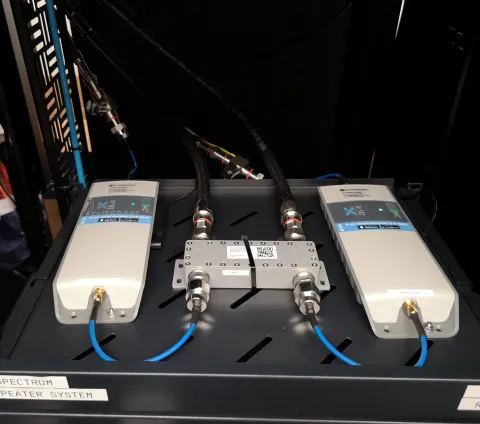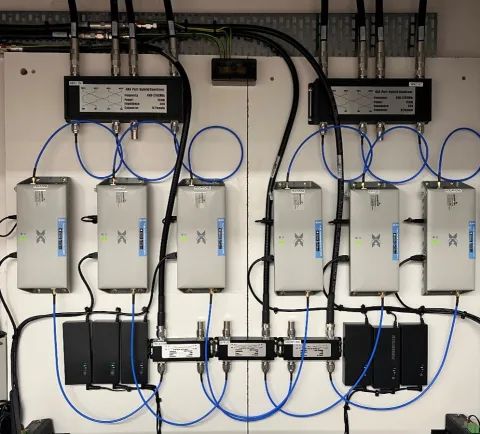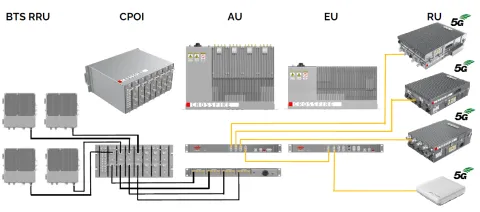Small Building Repeater Systems
Cel-Fi G41 is a 4G repeater which takes an input signal from the outside cellular network and uses an amplifier to boost it to full strength. It uses a roof mounted antenna to pick up this signal from the cell tower (referred to as the Macro Network).
Signal is then output through one or more internal “service” antennas. This can be as simple as a small antenna screwed onto the repeater, or using a cable to connect up ceiling mounted antennas.
Because signal comes from the Macro Network, performance of the system is determined by the Macro Network – your connection is influenced by traffic that the cell tower experiences.
The upside this is a very quick and effective way to provide in-building mobile coverage for 1-2 storey buildings such as residences, stores, or small office buildings.

Repeater Systems for Medium-Sized Buildings
For medium sized buildings, such as supermarkets, multi-storey apartment or office buildings up to 4-5 levels, G41 can be used as a component in a larger repeater system. Often referred to as a Clustered G41 system, this involves setting up multiple G41 repeaters into banks, which distribute signal throughout larger buildings using a complex chain of coaxial cables and RF dividers.
Clustered G41 systems are typically set up to provide all mobile network operator signals from the one system, sharing a common distribution cable and common set of antennas. This provides a major cost reduction compared to independent systems.
Because these systems are still using the Macro Network, the building size is limited by the number of users. Design rules are imposed by the mobile network operators to prevent too many users overloading the local cell towers.

Medium-Large Repeater Systems
Where budget is less constrained, the Cel-Fi QUATRA 4000e system can be used. QUATRA uses a Hub and Spoke design, where a main unit called the NU receives signal from the Macro Network, and distributes it through ordinary Cat6 Ethernet cables out to six Coverage Units (CU).
Each CU has the power of one G41, allowing up to 600% greater coverage footprint than a G41, and up to 1200% larger using the QUATRA Fibre Hub to provide an additional six CU. Fibre Extenders allow intermediary signal to be passed as far as 2 km, allowing signal to be captured in one location and distributed over great distances.
This system is still dependent on the Macro Network for capacity, and accordingly the same user limits are still imposed by the network operator. This means QUATRA is great for low user density situations like large aged care facilities and warehouses, but unsuitable for large high-rise buildings despite technically being able to cover their size.

Large & Dedicated Coverage Systems
For large buildings and high traffic buildings requiring dedicated capacity, a DAS solution is required. Typical buildings matching this description are shopping centres, casinos, airports, and commercial highrise buildings.
Rather than obtain a signal from the Macro Network, this solution passes all traffic over a dedicated internet connection. Hardware often looks similar to QUATRA, but can use as many Coverage Units as necessary to cover the building. Each CU is typically connected by fibre back to a distribution node placed in each building that requires coverage. All distribution nodes are connected by fibre back to a central comms room where the internet connection is located.
This solution has a higher price tag, but provides the best possible performance. Most importantly, it is the only option available for buildings with an occupancy or foot-traffic level that requires dedicated capacity. Digital DAS requires our team to work closely with the mobile network operators to coordinate design and commissioning.
